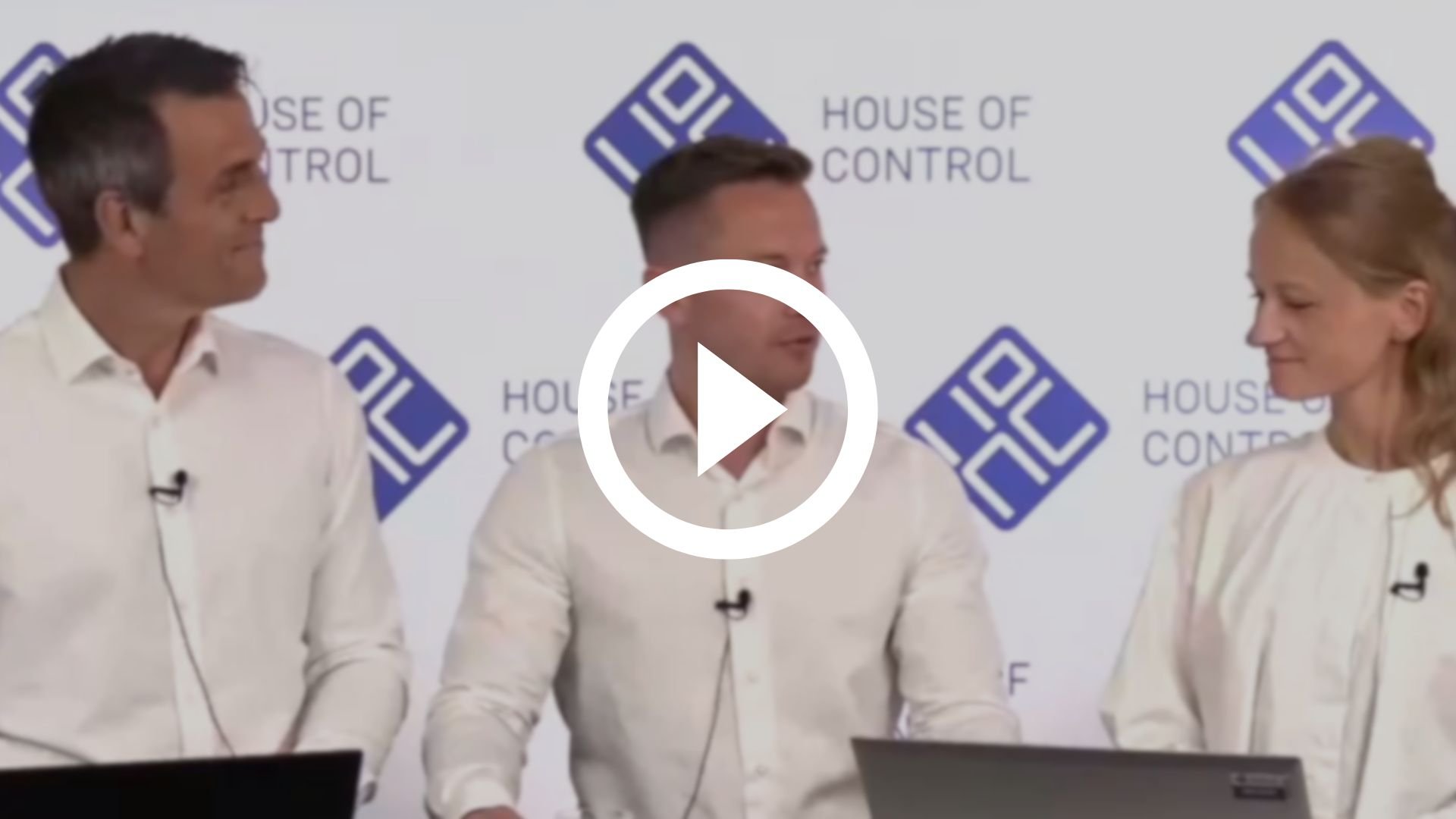How to build a business case for investing in a contract management software
How do you convince management that your company should invest in contract management software? For that, you need a business case. Here’s how you can structure the business case – and the facts and arguments you need to succeed.
.webp?width=1045&height=588&name=1%20(18).webp)
Let's start this article with the following scenario: You have realized all the benefits that your business and finance department can achieve by adopting contract management software. There is only one thing standing between the current situation and a future with full control over all the company's contracts. That is your ability to persuade top management that it is wise to make such an investment.
For this task, it might be wise to create a business case. A business case is a document (often delivered as a presentation) that aims to convince your colleagues why you should opt for a digital contract management solution. A well-constructed business case should answer most of the questions and objections your colleagues might have.
The structure of a business case for investing in contract management software
There is no set recipe for how to structure a business case. Consider this a suggestion, which needs to be adapted to your circumstances:
- Executive summary for top management
- Current challenges in the company related to contract management
- Proposed solution
- Benefits of contract management software
- Costs of contract management software
- Market survey and alternative solutions
- Implementation plan
- Risks
- Conclusion and recommendation
Below, we delve into each of the nine points in more depth. You can use the structure as a checklist in your presentation of the business case, and we have included suggestions for content in each section.
1. Executive summary for top management
Think of the so-called elevator pitch, when you have less than a minute to explain why, what, and how. This summary lays the educational groundwork for persuading your audience to pay attention and have a positive attitude towards what you will say.
Why: Lack of contract control has negative consequences for the company
- The company has deliveries it doesn't need, known only to certain employees
- Contracts are automatically renewed without termination or renegotiation
- The finance department lacks control over future commitments
- The problems grow as the company grows
What: A central overview of the contracts gives the company the control it deserves
- All contract documents collected in one place, with user access for those who need it
- Payment plans show future commitments — how large and when they end
- Notifications before contracts expire, requiring responsible parties to confirm ongoing need
- The finance department can easily create reports, budgets, and forecasts
How: Software that demands little change to achieve improvements
- Simple and cloud-based software with splendid data security and automatic updates
- The most labor-intensive part of the implementation is registering all contracts
- Support and assistance in registering contracts are available – in English and Scandinavian
- Requirement for new contracts to be registered in the solution
Benefits: Likely gains for the company
- Cuts other operating costs as unnecessary contracts are eliminated
- Prevents dependency on individuals and unwanted renewals of contracts
- Better control, more precision, and less stress in the finance department
- Can add functionality for price adjustments, IFRS 16, ESG reporting (sustainability acts), and supplier evaluations
Some of us will only have time to conduct this summary, while others will delve more deeply. The following sections are for a more comprehensive business case.
Inspirational read: The inside story when ManpowerGroup implemented contract management software
2. Current challenges in the company related to contract management
When proposing a new solution to a challenge, a central part of classical rhetoric is to describe the problem, its consequences for the company, and what could happen if it remains unsolved. This part of the business case largely elaborates on the 'why' section of the executive summary above.
Use storytelling and appeal to all the problems stemming from poor contract management, including frustrations and the feeling of lack of control. Nobody likes losing money, dealing with disorganization, facing negative surprises, or wasting unnecessary time. Here are some examples of what to include:
- Find examples of contracts that you have or had, which were not needed but continued to run, and how much they cost the company.
- Find examples of contracts that were renewed without renegotiation, or should not have been renewed, and how much they cost the company.
- Highlight the likelihood that there are many more such contracts.
- Describe how contracts are currently managed at different levels in the organization, including elements of dependency on individuals.
- Try to present a figure for what poor contract management costs the company, as well as the consequences it may have for non-financial matters (compliance). Our rule of thumb is that 10 percent of other operating costs can be cut with sound contract management.
- Explain that the current situation does not scale well, and it will lead to more disorganization and errors in the future – which is unprofessional and not in line with what the company in general, and the finance department in particular, should be known for.
3. Proposed solution
Once the current situation and challenges are well described, the next step is to explore how the company can solve these challenges. Here, you must present why software for contract management will be the best solution for these challenges.
Now you move towards the logical arguments. Here are some sober points to emphasize:
- Basic functionality includes storing the contract documents, entering payment schedules, linking the contract to employees, setting up notifications.
- It's important to establish contract management routines so that future contracts are entered and maintenance becomes predictable.
- It's a cloud-based solution, and with central control of all contracts, you eliminate dependency on individuals.
- The software is regularly updated at no extra charge.
- Data security is very high, with operation in secure data centers, and regular tests carried out by independent third parties.
4. Benefits of contract management software
It's important to recognize that a digital solution for contract management has both direct and indirect benefits. Here are elements that should be included:
- No more duplication: You cut costs when you know what you have in terms of deliveries and commitments.
- Time to renegotiate, because you are notified before contracts expire.
- Faster and more accurate budgeting and forecasting when you have a full overview.
- Better liquidity management when you know future payments.
- Better responsiveness if you need to implement cost cuts.
- Save time and avoid negative surprises when you have full control over all contracts.
- Removes dependency on key personnel related to the ownership of contracts.
- You demonstrate a new level of order and professionalism to the board and investors, building trust in how the business is run.
- A control that scales: You don't lose track of contracts and commitments even as the business grows.
Inspirational read: How Visma’s procurement team saved NOK 220 million
5. Costs of contract management software
Most contract management tools are licensed as Software as a Service (SaaS) solutions. Many providers prefer to keep the base price low, allowing customers to pay according to usage and the need for customer support. The price is often determined by:
- The number of users who will have various types of access
- The number of contracts to be entered into the solution
- Additional functionality, such as digital signature, price indexing, and specialized industry solutions
Most companies will find that the license pays for itself, as it lays the foundation for lower costs (10 percent of other operating costs can usually be cut).
6. Market survey and alternative solutions
In this section, describe the criteria underlying the proposed solution, as well as the alternatives considered. We suggest using the following criteria to qualify the choice of solution:
- User-friendliness
- Implementation time
- Training requirements
- Opportunities for customizing the software to own needs
- Dashboard and reports
- Data security
- Update frequency
- Solidity: Does the provider have a size and financial strength that is reassuring?
- Access to competent support in the desired languages
- User manuals, webinars, and methods for self-help
- References: What do other customers say?
- Extensions: Do you need help with IFRS 16, transparency laws, or assessing suppliers?
Inspirational read: How Q-Free achieved next-level IFRS 16 compliance
7. Implementation plan
This is the timeline from signing to when you are steady users of the solution. We recommend including at least the following points:
- Create a contract management policy.
- Define responsibility for software and contract management.
- Schedule a time with the software vendor for training.
- Collection of contracts throughout the organization.
- Registration of contracts.
8. Risks
As with all changes, risks surface when the company introduces a new solution and new policy for contract management. There is a need for new contract management guidelines to be followed, so the decision should be anchored at the top of the organization. A practical approach to reducing risk is to address the following points:
- Be clear that now all existing contracts within a certain area are to be registered in the digital solution.
- Similarly clear that all subsequent new contracts are to be registered continuously.
- Set aside time and resources to carry out the implementation.
- Establish one or more responsible persons/roles who own the contract management.
- Conduct periodic follow-ups in the organization to ensure contracts are registered.
9. Conclusion and recommendation
The conclusion is where you dispel all doubt by being crystal clear about what you recommend and why. Here, you can draw content from the summary you used initially. Be sure to include the following:
- Recommend purchasing software for contract management.
- List the most important gains you will achieve.
- Also, list all the problems you avoid.
- Be completely transparent about the costs incurred by purchasing the software.
- Make a cost-benefit analysis based on the previous three points.
- Explain how the proposal fits into the company's (and your department's) strategy, ambitions, and likely growth.
Good luck with the business case and convincing management. We're here to help you, and show you how out contract management software can contribute to your business' success. Schedule a meeting with us if you want to know more.
Book a meeting with us whenever it suits you



.webp)